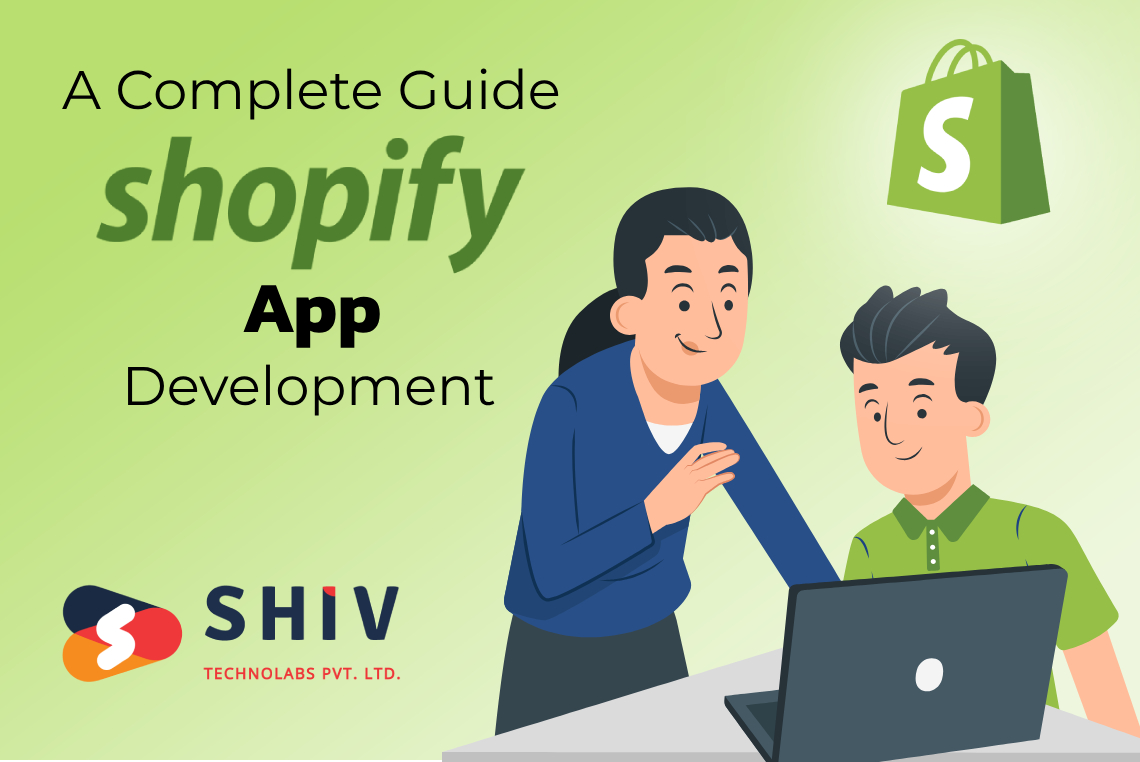Table of Contents
Starting a business online and increasing your business goals might be difficult. However, new-generation e-commerce platforms have made it easier and faster to design an app and launch your business online in just a few clicks.
According to a recent research, more than 4 million e-commerce sites are being developed on Shopify, with online sellers from over 175 countries. Shopify has about 20% of the global eCommerce platform market and millions of customers because of its rapid and easy flexibility and functionality.
What is Shopify?
Shopify is an eCommerce platform that helps individuals, start-ups, and corporations achieve their digital business objectives in the Industry 4.0 era and beyond. The Shopify API platform, a free app development tool released in 2006, allows developers and producers to design and set up an online store to organise items, collect payments, customise the Shopify website, and analyse sales information in real time and with no effort.
This thorough and short tutorial will assist in learning how to build eCommerce solutions via Shopify and how to deal with the Shopify ecosystem before commencing the process of developing an app on Shopify.
Benefits of Shopify App Development
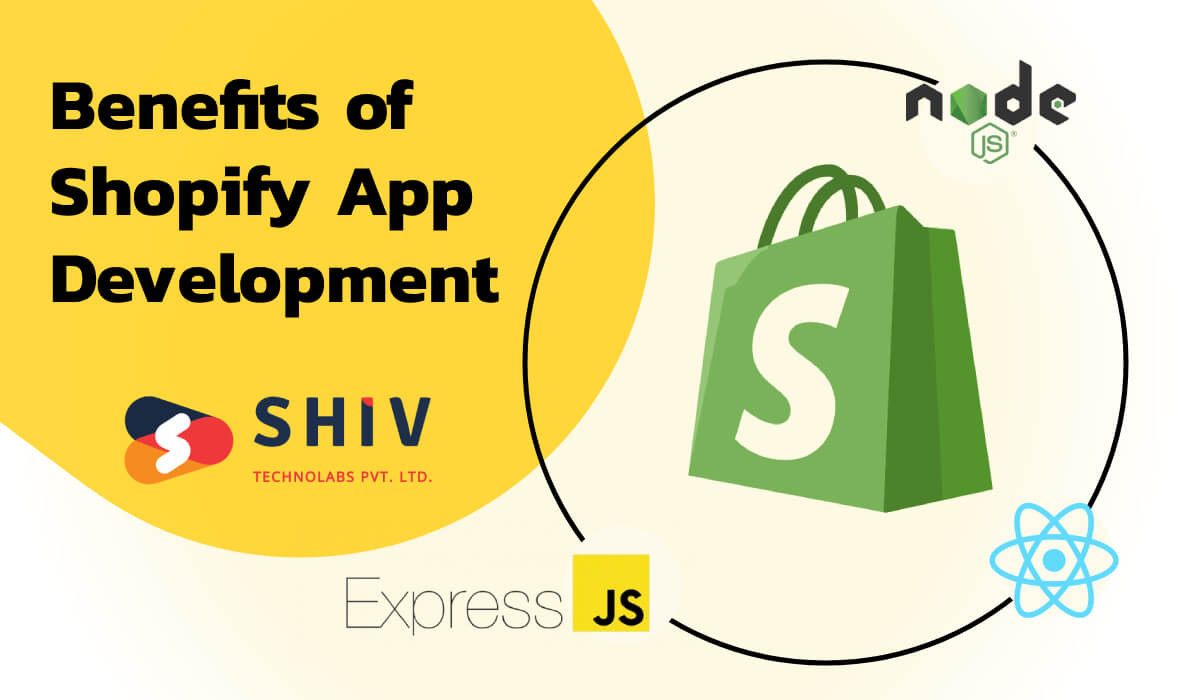
Shopify is thought to use a proprietary coding language, and a creator must be a developer. Shopify, on the other hand, is built on a single stack of technology. A Shopify app may be written as a conventional web application on any computer using a variety of tools and placed on an individual’s server.
Developers, for example, may create their own Shopify app using Node.js and Express.js or Node.js and React.js. Although Shopify is a Ruby-based platform, developers may take advantage of rapid upgrades in libraries and tools, as Shopify explicitly supports.
So, what distinguishes Shopify from other common online applications? Here are some of the capabilities that Shopify provides to developers and designers.
Features of Shopify App Development
- Most Shopify applications are scalable, allowing the website to easily add new features and capabilities.
- Apps provide easy access to data from eCommerce shops, allowing for greater insights, maneuvering, and giving solutions targeted to consumers’ requirements.
- Users may utilize Shopify applications to save purchase details and obtain detailed data on the whole sales cycle.
- Apps include statistics for individualized and targeted marketing, which aids in increasing and optimizing sales income.
- Shopify applications are easy to customize and may be used for a variety of reasons, including payments and company operations assistance.
- With the click of a few buttons, Shopify applications may effortlessly interact with social media, increase customers, and expand business reach.
- Provide personalized advice and marketing insights to better position the brand and enhance the consumer experience.
Understanding the Shopify App Development Ecosystem
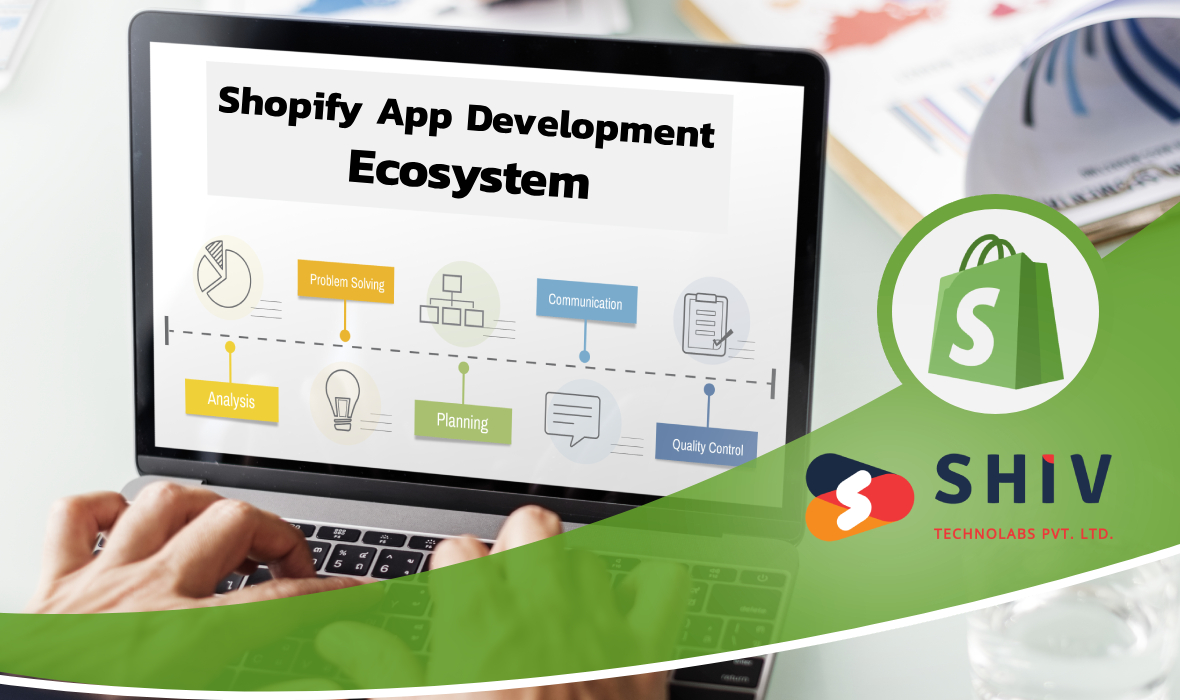
Before we begin the process of developing a Shopify app, let us first understand how apps interact with the Shopify ecosystem and what infrastructure and tech stack is accessible to a developer for developing a Shopify app.
Shopify is intended to allow businesses to think beyond borders and stand out in the online world. With each user, the market demands new apps and blossoming features. However, developing such an app is a challenge. As a result, the Shopify ecosystem enables developers to create applications with customized tools and resources that meet the needs and desires of their individual customers.
Running an online e-commerce business is not the same as purchasing a product online or posting a personal blog online. There’s a lot more to manage with many and intricate capabilities. When developing an online shop, businesses should seek for safe simple inventory management, secured SSL payments and checkouts, marketing campaigns, logistics integration, and platform optimization.
The Shopify ecosystem contains several applications that assist businesses in quickly and easily extending these capabilities and functions to their consumers via an online store. There is an app for everything, from adding customer reviews to publishing items on social media and obtaining detailed data on online sales to marketing a brand’s email advertising.
Shopify App Store
The Shopify app store is the most convenient way for retailers to locate the proper and most compatible software. It allows businesses to create an online store with the necessary capabilities and features. The app shop is divided into numerous app categories, which are shown below. One of the app store’s substantial features is a strong suggestions system that simplifies the work of selecting the right app.
Types of Shopify Apps
# Public Apps
These applications are available to a variety of retailers and may be titled or listed in the Shopify app store. There are typically two sorts of public apps: listed and unlisted. Merchants can install the applications mentioned in the Shopify app store. Unlisted, on the other hand, may be downloaded from the developer’s website or the application’s individual store.
# Custom Apps
These apps are built just for a merchant and cannot be identified or displayed in the app store. They are generated using the partner dashboard. These apps have a clear necessity. They are appropriate for adding specific features or expanding the app across several platforms.
# Private Apps
These applications are likewise custom-made by developers for retailers, with functionality that bespoke apps do not provide. Private applications are offered on the merchant’s shop rather than the Shopify store. External app developers will also want API and admin access.
# Draft Apps
Apps that Shopify partners utilize for testing and validation purpose by developers. Such apps can only be named in the development store, which enables store transfer permanently.
Getting Started Shopify App Development
With e-commerce, the business landscape is changing, and merchants are increasingly pushing their items online, transitioning from a physical store to an online marketplace. As a result, the market for developing e-commerce website with flawless aesthetics and functionality has exploded. Popular e-commerce systems include WordPress, Shopify, Magento, WooCommerce, PrestaShop, BigCommerce, and OpenCart. Among them, Shopify is a popular option for businesses seeking quality and efficiency, as well as simplicity and attractive features for their consumers.
How to Begin with Shopify App Development
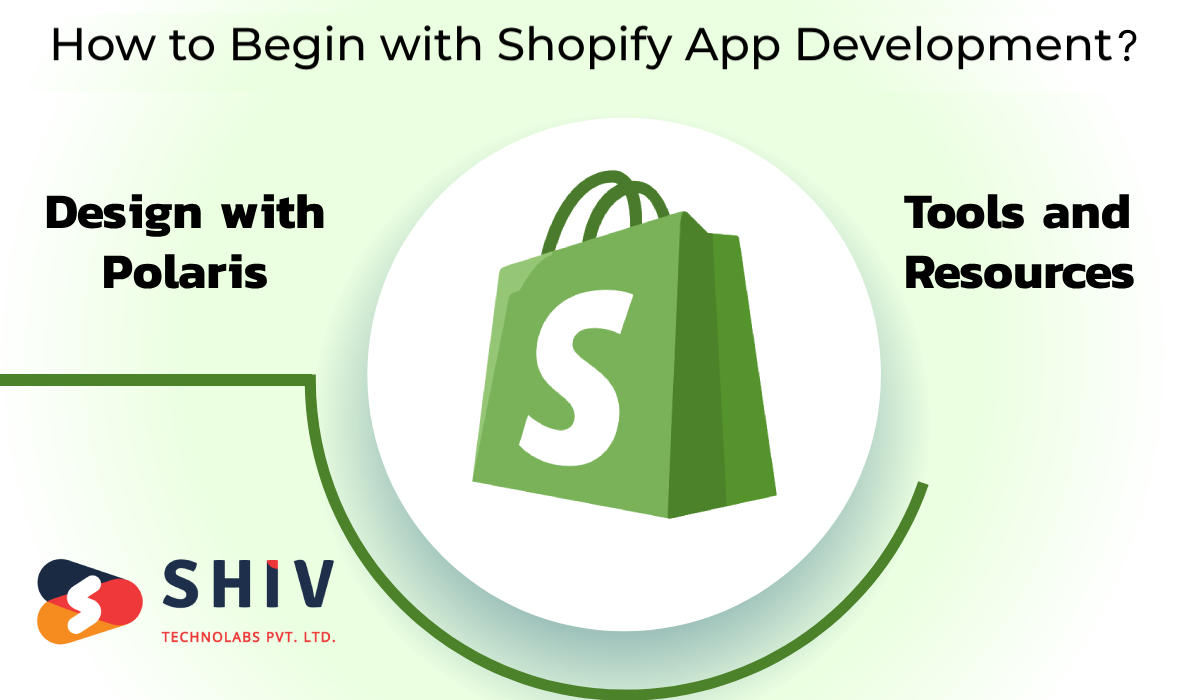
After learning about the various facets of the Shopify app development environment, as well as its countless features and advantages, let’s answer the issue “How to Build a Shopify App?” Let’s first analyses the procedures for creating a Shopify app and the advantages of creating an MVP.
The app concept is fine, but what if it does not fit into the Shopify environment or is not ready for the design process? Thorough market research is essential for designing an MVP and validating an app idea in order for it to be successful. Here are some questions to ask before developing an app on Shopify.
- Does the app address customers’ actual issues?
- Is there a similar or comparable app on the market?
- What are the current industry trends and client expectations?
- Identifying markets and communities
- Expertise and time to construct it or develop the app
Design with Polaris
Polaris is a design solution for constructing a merchant experience for a Shopify admin that includes API documentation, design help, development choices, and code libraries. Polaris, in a nutshell, is a startup kit for entrepreneurs looking to redefine commerce. Many app designers and developers utilize it both within and outside at Shopify.
The design system also contributes to merchants having a smooth, continuous, and rich user experience. It is driven by comprehensive standards and concepts that developers or app designers may utilize when developing an app or a channel for Shopify.
Tools and Resources
Following an in-depth understanding of how to use Polaris and create an app that fits easily into a company process and meets the needs of a merchant, the next step is to learn about the many tools and documentation that Shopify provides developers.
Customers may create apps using a familiar programming language and framework since Shopify is language-neutral. It also suggests app-building fundamentals and best practices as a resource for getting the product ready to market.
The requirements are listed below so you can get started.
- A development store and a partner account on Shopify
- Access to a computer command line and a text editor
- Any backend programming language, such as Node.JS, Java, PHP, Ruby, or Python, can be used to organize the data.
- Using a NPM package manager to install applications
Steps to Shopify App Development
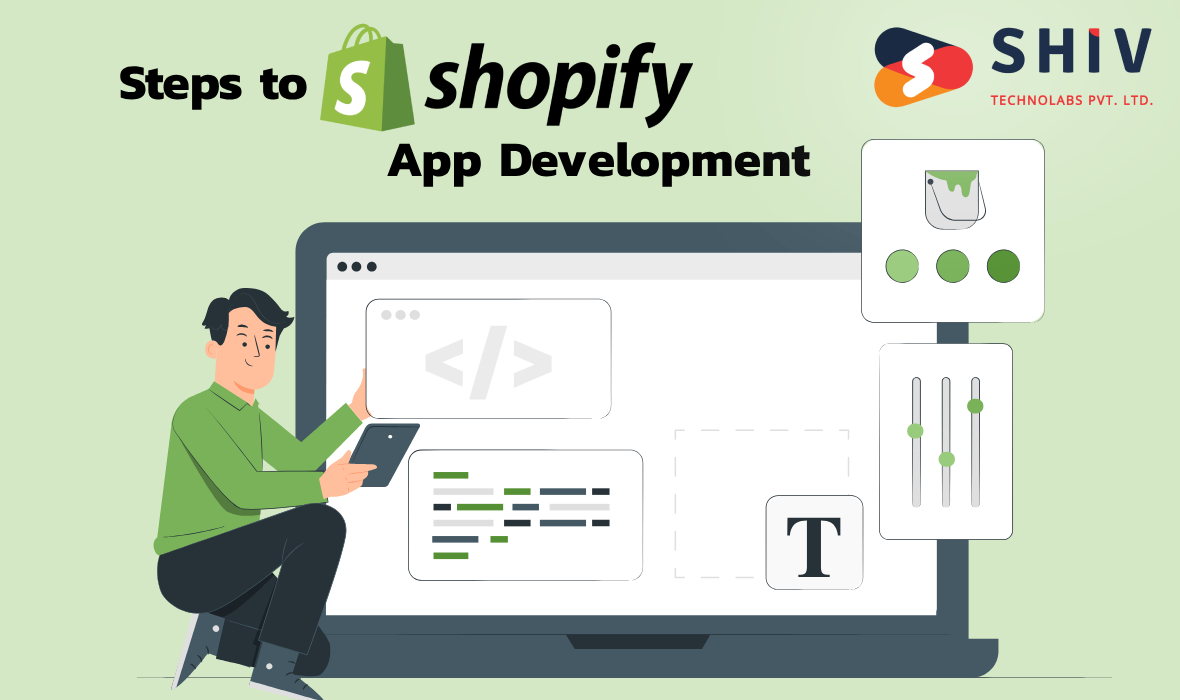
The developer builds, reviews, and revises apps via the Shopify partner dashboard. Shopify users may create an embedded app by following the procedures outlined below:
- Installing the app on the partner dashboard by following the instructions on the apps page
- Connecting the application to the Shopify system
- Polaris was used to create the user interface.
- Configuring the GraphQL Admin API or REST API
- Integrating the Billing API
- Using webhooks or EventBridge to capture and respond to events
Test, Submission & Review
Users may test the Shopify app on a development store before submitting it for review to check for problems and mistakes. Many businesses rely on the Shopify app for commerce, thus it is critical that the app runs smoothly and without issues.
Shopify reviewers do not examine applications that are in beta, unfinished, or have faults, which result in rejection. Apps with production-ready status are merely submitted for evaluation and may be published. The easiest approach to validate the app is to utilise it in conjunction with a merchant’s competence level and list every conceivable problem for correction.
The next step is to submit the production-ready Shopify app in order to get the app live and in the hands of businesses to reap the app’s advantages. However, the software is subjected to a series of checks and balances before being approved. Among the stages for reviewing are:
Meeting Shopify’s Technical, Security, and UX Requirements
- Creating an efficient app listing
- Performance and bug testing of the app
- Implementing any adjustments deemed necessary by the review team
Frequently Asked Questions
# How do you pick the finest Shopify app development company?
Make certain that you have done thorough research on the Shopify app development the company. Successive Digital specialises on developing Shopify e-commerce shops using the Shopify platform. We are experts in front-end development, with a keen eye for design and a thorough understanding of UX concepts. Successive is also well-versed on all Shopify integrations.
# How much does it cost to establish a Shopify store?
It is determined by the project. The cost of the Shopify app varies depending on the project and how long it takes, taking into account its complexity and functions. Speak with Successive Shopify specialists to obtain the most competitive quotation for your website.
# How much time is required for developing a Shopify app?
The entire duration relies on the development’s complexity and features, and it is probable to range from a week to months. It is also affected by other factors like as features, platform, and the scope of the project. Now is the time to contact our Successive Expert.
# Is Shopify beneficial to a growing business?
Shopify is an amazing platform for rapidly and easily launching a business online. Shopify provides all of the fundamental and sophisticated technologies that most e-commerce firms require in today’s digital environment. It also provides the organization with an advantage by allowing it to tap into a wide network of other merchants, artists, eCommerce professionals, and developers.

